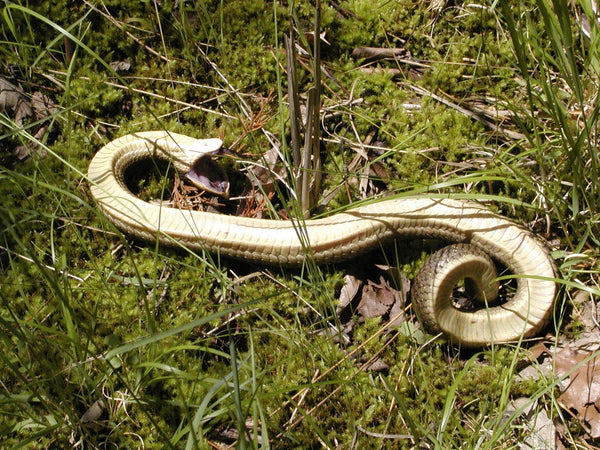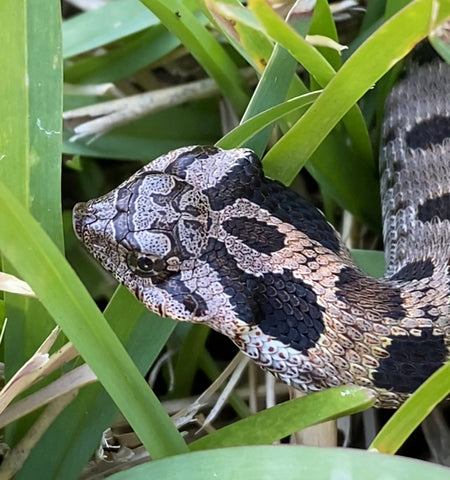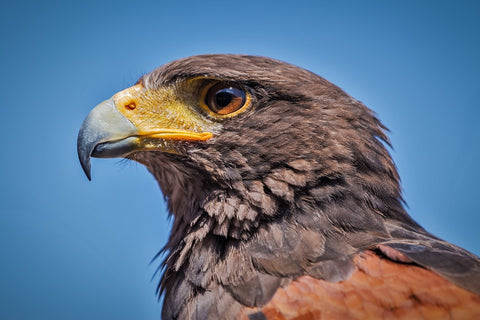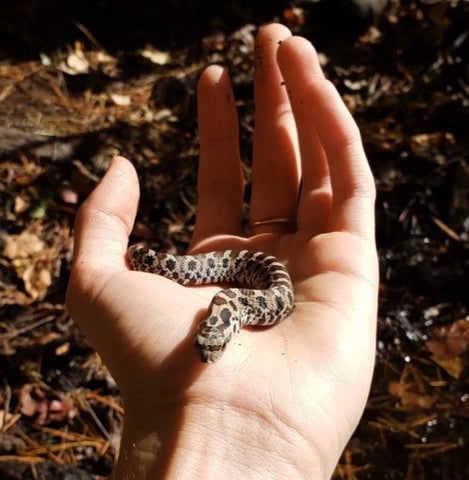By Nick Helble

Photo taken by Kory Roberts and uploaded to iNaturalist.
Although they’re far from the most popular reptile to own as a pet, hognose snakes are fascinating creatures that deserve more attention. Their upturned noses are unique among both snakes and reptiles in general, and there are a variety of unique hognose snake morphs on par with ball pythons.
However, there is one aspect in particular that makes these adorable creatures stand out, and it’s the way they play dead in the wild. But why do hognose snakes play dead? Keep reading for some interesting information about how hognose snakes survive in the wild and how it applies to their behavior in captivity.
Hognose Snakes in the Wild
As members of the Heterodon genus in the Colubrid family of snakes, hognoses have a specific place in the snake family tree. The reason for their high specification in this scientific order is because they exhibit multiple characteristics that are highly unique on their own, but even more unique in combination.

Photo taken by Clayton Bownds and uploaded to iNaturalist.
For example, consider their upturned noses. Obviously, the hognose’s namesake is the hog— an animal that uses its upturned nose to dig in the ground for food. Hognose snakes use their noses for the same reason, and they burrow in order to eat. Typically, food that can be found through burrowing is small prey like insects, eggs, and small rodents. For the most part, these animals can’t put up much of a fight against a snake (especially those still in eggs!), which would eliminate the need for advanced hunting techniques like venom.
However, hognose snakes are technically venomous. This may come as a surprise to you; after all, just about every herpetologist and pet seller will classify these creatures as non-venomous.
So are hognose snakes venomous or what?
The reason why hognose snakes are technically venomous is because of their saliva, not because of their fangs. This is the source for all the ambiguity and is yet another reason that hognoses are among the most unique members of the snake family. This saliva is weak to humans because of our size, but it’s effective on small prey like amphibians. Despite their burrowing noses, non-burrowing amphibians make up a sizable portion of a balanced hognose snake diet (which is why Frog Juice is so effective in helping picky hognose snakes eat their food).

So we’ve established two unique features of hognose snakes; they burrow in the ground for some prey, and they use mildly toxic saliva to hunt others. Now for the third piece of the puzzle.
Why Hognose Snakes Play Dead
Imagine that you’re a creature that can burrow in the ground and produce toxic venom. Now imagine that you’ve come into contact with a much larger creature who might want to eat you, like a bird or a fox. How would you defend yourself from becoming dinner?
Would you try and bite the predator and incapacitate it with your venom? That might work if you had more powerful salivary venom like a Komodo dragon, or if you injected the venom through your fangs like a viper. Unfortunately, neither of these apply to a hognose, making this strategy a no-go.

Would you try and burrow into the ground and hide? Well, this might work if you had a short body or limbs that helped you dig quickly. Once again, neither of these apply to hognose snakes, making this another doomed strategy.
So what’s left for our poor hoggie? They have one final trick up their sleeve, which is to roll over and emit foul smells from their cloaca. This makes it appear as though they’ve been dead and decomposing for a long time, which discourages most predators from wanting to take a bite out of disgust.
That’s the secret to their survival and the final characteristic that distinguishes these creatures from just about every other member of the snake family. Ultimately, hognose snakes are a jack of all trades but a master of none!
Can you train your hognose snake to play dead?
This might seem like a reasonable question to ask; after all, you can train a pet dog to do it. However, this is a misguided line of thinking for a few reasons.
Dogs have complex brains that have been molded by humans over generations of domestication. This is what allows them to be receptive to psychological conditioning, which enables them to be taught tricks. There has been a scientific study that suggests a certain level of intelligence in a certain kind of snake, but nothing has been discovered that’s anywhere near the level of intelligence to humanely train one.

And this is the most important point about why hognose snakes play dead:
Playing dead for a hognose snake isn’t a party trick or learned behavior; it’s instinct. This means that it’s ingrained in their behavior from birth and is a necessary component of their survival in the wild. Because of this, they only play dead if they genuinely feel as though their life is in danger and it’s the only way to avoid being eaten.
By this logic, it’s technically possible to intimidate a captive hognose snake into playing dead by making it believe that its life is in danger. However, that would be an unbelievably cruel thing to do!
The goal of any responsible pet owner is to foster a loving relationship and a comfortable environment for their animal companion. This is the case for any creature, whether it’s a big fluffy dog or a small scaly snake. Hognose snakes are special and timid creatures who deserve to be treated just as nicely as you would a cute puppy or kitten.

Photo taken by Philip Careless and uploaded to iNaturalist.
If you want a unique animal companion to observe and appreciate with minimal interference, a hognose snake is a terrific choice. But if you just want a pet that you can train to play tricks, you’re far better off with a dog. Please, don’t try and train your hognose snake to play dead!

